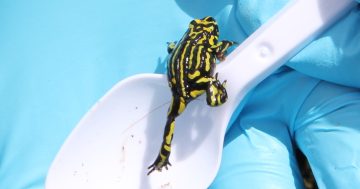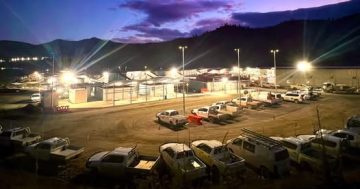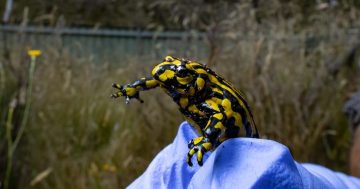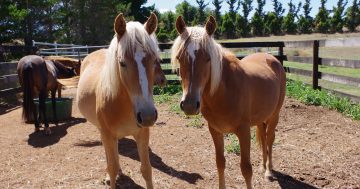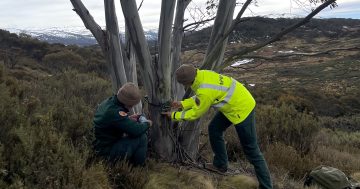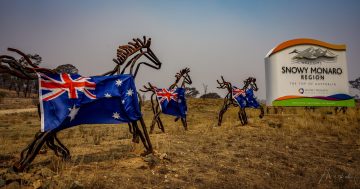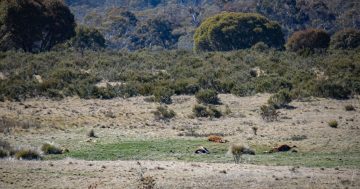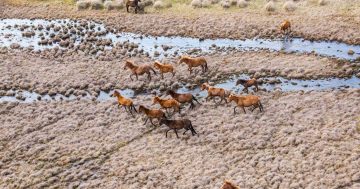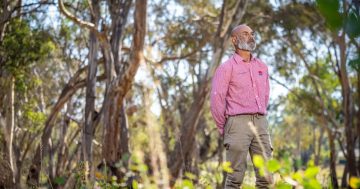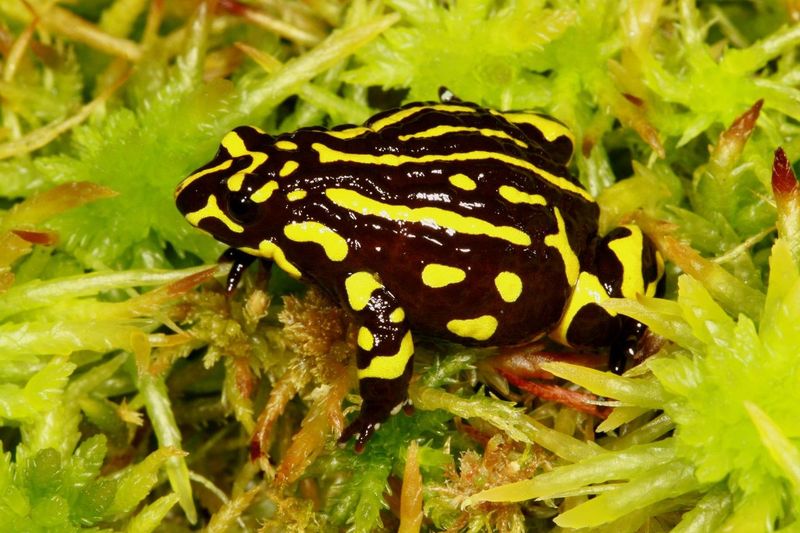
Hundreds of critically endangered northern corroboree frogs have been released into Brindabella National Park. Photo: Taronga Zoo.
In a major boost for Australian conservation, 544 critically endangered northern corroboree frogs have been released into Brindabella National Park, marking the largest-ever release in the NSW national park.
Bred at Taronga Zoo’s corroboree frog headquarters in Sydney, the frogs were released as part of long-term conservation efforts to bolster the dwindling wild population – now estimated at fewer than 1200 mature individuals.
“This is the largest frog release within this population to date. The 544 frogs aged four months to one year will dramatically bolster the wild population of this critically endangered species,” said Michael McFadden, Wildlife Conservation Officer at Taronga Conservation Society Australia.
The northern and southern corroboree frogs are endemic to Australia’s alpine region, but inhabit different geographic ranges.
The southern species (Pseudophryne corroboree) lives exclusively in the Jagungal Wilderness Area within southern Kosciuszko National Park while the northern species (Pseudophryne pengilleyi) can be found in the northern part of Kosciuszko National Park including Namadgi National Park, Brindabella National Park and some adjacent state forests.
Weighing a minute two to three grams and about the size of a paper clip, their presence in their niche subalpine ranges supports a healthy and resilient environment, making them vital to the biodiversity of these fragile habitats.
The primary difference between the northern and southern corroboree frogs lies in the color of their stripes.
Both have distinct black and yellow (or greenish-yellow) stripes, but the northern corroboree frog has a more greenish tinge to its yellow stripes.
Additionally, the northern corroboree frog is generally smaller and has narrower stripes than its southern counterpart.
The primary cause of the species’ decline that started in the 1980s is chytridiomycosis, a virulent skin disease caused by the amphibian chytrid fungus, which has resulted in the disappearance of hundreds of amphibian species worldwide.
The fungus is spread through water or direct contact with other frogs. It attacks their skin and affects their heart. Chytrid fungus does not cause immediate death and can therefore spread quickly among frog species and bodies of water.
Other threats to the corroboree frog species include droughts, flooding and bushfires, including the Black Summer bushfires which impacted most of the species’ habitat in the Fiery Ranges, southwest of Canberra.
Introduced species deer, pigs and horses are also considered a threat to the survival of the species as are exotic plants which smother breeding grounds and shading ponds, rendering these spaces unsuitable for frogs.
“The northern corroboree frog is one of Australia’s best-known frog species and is culturally significant to the traditional owners where it is found,” said Dave Hunter, senior threatened species officer with the Saving Our Species (SoS) program.
“There is no reason to let it go extinct,” he said. “We have the capacity to maintain critically endangered frogs in the wild, while research continues into a solution for amphibian chytrid fungus.”
Encouragingly, according to Taronga Zoo, some frogs released in past years have been heard calling in the wild, showing that zoo-bred frogs can survive, mature and contribute to future generations.
Co-ordinated by NSW Government’s Saving our Species program, and in collaboration with National Parks and Wildlife Services and Taronga Conservation Society Australia, the conservation breeding program has released thousands of eggs and hundreds of frogs to the wild, with more planned for the survival for this endemic Australian amphibian.







